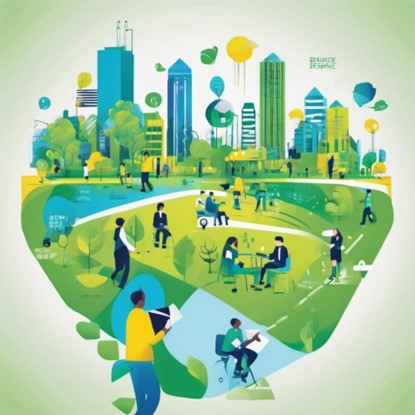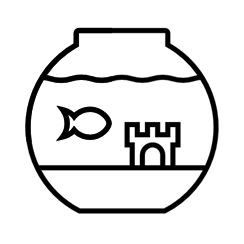With Method Cards, you can create good and engaging teaching sessions. Use them to help you plan your lessons, so you can introduce Green Soft Skills in an engaging way.
Method 1: Urban Green Space Development Symposium
Description: Organize a symposium focused on urban green space development, where students present their research, projects, and proposals aimed at enhancing green spaces in urban environments. Through public speaking engagements, students will communicate innovative ideas and strategies for creating sustainable and accessible green spaces that improve quality of life and promote environmental stewardship in cities.
Working time: 45-60 minutes
Toolbox and setting: The use of particular tools is not required
2. Project Development and Preparation (60 minutes) - Prior to the symposium, allocate time for students to develop and refine their research projects, design proposals, or practical interventions focused on urban green space development. - Encourage students to explore innovative approaches, such as green infrastructure, urban forestry, community gardens, or green roofs, and consider factors like accessibility, equity, and sustainability in their designs.
3. Presentation Design and Rehearsal (45 minutes) - Guide students in structuring their presentations to effectively communicate the objectives, methodology, findings, and recommendations of their urban green space projects. - Provide opportunities for students to rehearse their presentations, focusing on clear articulation, engaging storytelling, and visual aids to convey the importance and potential impact of their proposals.
4. Urban Green Space Development Symposium (90 minutes) - Host the symposium, featuring student presentations in a conference-style format, with each participant allotted a designated time slot to deliver their talk and engage with the audience. - Showcase a diverse range of urban green space projects and proposals, highlighting innovative designs, sustainability features, community engagement strategies, and potential benefits for urban residents and ecosystems.
5. Audience Engagement and Feedback (30 minutes) - Facilitate interactive Q&A sessions following each presentation, encouraging audience members to ask questions, offer feedback, and engage in discussions about the feasibility, effectiveness, and scalability of the showcased urban green space projects. - Provide feedback forms or digital surveys for audience members to provide constructive feedback on the presentations, helping students assess the clarity, persuasiveness, and impact of their communication strategies.
6. Reflection and Next Steps (20 minutes) - Conclude the symposium with a reflection session where students share their experiences, insights, and lessons learned from participating in the Urban Green Space Development Symposium. - Encourage students to reflect on the potential real-world impact of their urban green space projects and proposals, and identify opportunities for further research, collaboration, or implementation in fostering sustainable and resilient cities.
Outcomes: Through the Urban Green Space Development Symposium, students have the opportunity to showcase their research, creativity, and advocacy efforts aimed at enhancing green spaces in urban environments. By engaging in public speaking engagements and sharing their projects and proposals, students contribute to the discourse on urban sustainability and inspire positive change towards creating greener, healthier, and more livable cities.

Method 2: The Fishbowl
Description: the activity simplifies a debating situation, avoiding the issue of having a large group trying to discuss openly a topic / problem, by selecting a smaller core group for active discussions. Facilitation is focused on the core group discussion, while others listen and reflect. As there are less people discussing, it is easier to facilitate and reach a conclusion on clear grounds.
Working time: 20-45 minutes
Toolbox and setting: The use of particular tools is not required
Variations of the technique is whether to set a “closed conversation” among a specific group or open one or more chairs to “visitors”, members of the audience, who want to ask questions or make comments.
The activity can be even more inclusive if the time is extended and every 5-10 minutes, one or two selected members are shifted with other individuals from the larger group.
Note, it is possible to use this technique onsite and online.
SOFTEN tips: While the technique is self-organized once the discussion gets underway, the fishbowl process usually has a facilitator or moderator. The fishbowl is best used as part of a larger process of discussion and decision-making.
Outcomes: knowledge (listen, observe), apply (judge), analyse (distinguish, evaluate), create (integrate)
• Maintain control in debating situations over a hot topic.
• Maintain a variety of perspectives in a xebate
• Give a chance to the observers to have less emotional involvement and potentially increased quality in reflection and understanding of the issue considered. Green mindset behaviours: the technique is directly applicable for discussing the notion of green transition, for example if that is a positive change for all individuals and the society.
Read more:
● The Fishbowl technique: https://www.betterevaluation.org/methods-approaches/methods/fishbowl-technique

